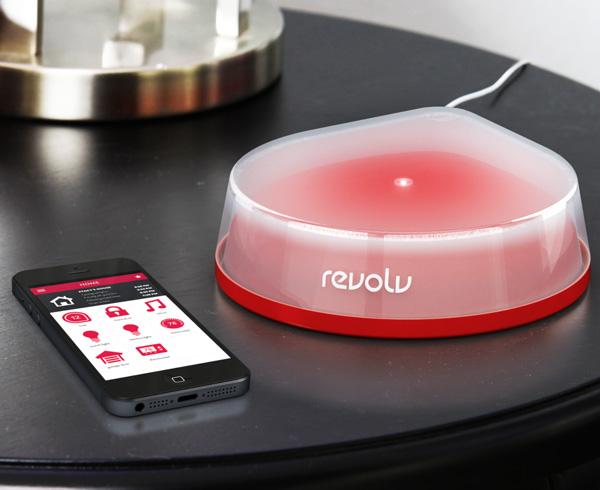Cheap Home Automation or Just Cheap Crap?

But what kind of home automation can you get for $200 or maybe, if you’re willing to splurge, $300?
Obviously, the answer is going to depend a great deal upon your definition of “automation”. On Amazon’s recently created Home Automation department page, the company defines home automation this way:
Home Automation can be as simple as installing a programmable thermostat or occupancy sensor, or as sophisticated as setting up a network to enable centralized control of your entire home. The aim is to simplify your life and help you live comfortably by automating everyday tasks and giving you remote access to your home when you're away.
Under that colossal umbrella, Amazon is able to categorize damn near anything, from webcams and NAS drives to smart TVs and Kindle Fires, as home automation; and, while I understand that’s a good marketing strategy, that’s not exactly what I think of when I hear “home automation”. Multiple remote-controlled light switches and dimmers working together? That’s home automation. A Smart TV with a Redbox Instant or TED app? Uh, not so much. (Although I will grudgingly give bonus points to Samsung for voice recognition…) And, cool as it is, in terms of home automation is Kwikset’s Kevo Bluetooth electronic deadbolt door lock really any different than a garage door opener? In fact, since all the Kevo does is unlock the door, it doesn’t do as much as a garage door opener does – and at $219, the Kevo is more expensive than a lot of garage door openers, too.
I think of home automation in terms of systems and interoperability. At the moment, the Kevo is a Bluetooth-enabled, smartphone-app driven device that’s not designed to play nice with any of the home automation controllers on the market. On the other hand, a number of Kwikset’s Z-Wave- or ZigBee-enabled door locks can be integrated into a variety of systems. Those are home automation products.
Now, back to my question about what kind of home automation starter system can be had for under $300? Is there any hope in hell of getting at least the basic foundation of a system on such a cheeseparing budget?
It goes without saying that the big names are out of the picture. Lutron RadioRA 2 wireless switchers and dimmers start at $149 per light switch. Control4’s least expensive controller, the HC-250, sells for $750 (and there’ll be professional installation and programming costs on top of that). Likewise with Crestron, whose Adagio system starts well above that.
There are a handful of companies hammering away at the $300 barrier, though. Vera (previously known as Mi Casa Verde), for example, makes the $179 VeraLite and $249 Vera3 controllers. Both controllers utilize Z-Wave communication, with the VeraLite capable of keeping tabs on up to 70 devices and the Vera3 handling up to 200. The Vera3 also includes a built-in Wi-Fi router.
The system that has me most intrigued so far is Revolv. The company’s $299 Revolv Hub is scheduled to ship “Fall 2013”. Since I haven’t been able to get my hands on a sample Hub yet, I have no idea how well the device - and the included lifetime cloud connectivity service plan - will work. According to Revolv:
With the Revolv Smart Home Solution, consumers have the freedom to mix and match wireless devices and appliances in their home to achieve a new level of lifestyle automation right from their smart phone. Revolv automates daily life routines around time, GPS proximity, sensor triggers such as motion in the home, and on-demand commands set by the user. Its proprietary GeoSense technology automatically activates connected devices when the user reaches a certain geo-radius to and from their home.
It’s a pretty ambitious game plan, and the technology inside the Hub is impressive.
The Revolv hub includes an unprecedented 7 wireless radios speaking 10 different languages, supporting many of the most popular connected home devices available today. Hundreds more devices will be compatible with the Revolv Solution in the coming months, eventually covering 95% of commercially available devices, making it the most universal solution on the market.
Of course, just how impressive the Revolv system turns out to be depends a lot on how long “eventually covering 95% of commercially available devices” will actually take. Ultimately, a control system is only as good as the devices it’s capable of controlling, how easy it is to program, and how reliably it executes its programming. If it were an easy matter of plugging-and-playing, there’d be lots of affordable home automation systems from which to choose. (Oh Internet of Things, when will you get here?) In the meantime, we’ll just have to wait. Patience is supposed to be a virtue, right?
By the way, if waiting isn’t your style, you can discover why home automation is so difficult to turn into a mass-market product by DIYing your own controller hardware and programming using a Raspberry Pi. And if you get tired of that, you can always turn it into a cheap media center…













































